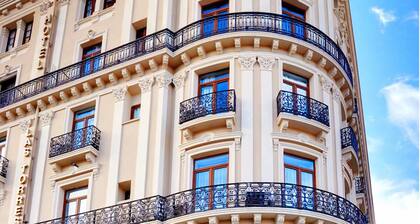Zaragoza’s Roman Wall encircled the town when it was a Roman colony known as Caesaraugusta. Although you’ll see only fragments of this once-powerful wall scattered throughout modern Zaragoza, gain tangible insight into the city’s Roman past from its ruins.
The Romans founded the city in the 14th century B.C. as Caesaraugusta, from which its modern name, Zaragoza, is derived. City walls were not built until the 3rd century. They originally stretched over 9,800 feet (3,000 meters) and contained 120 defense towers. After the decline of the Roman civilization, later rulers, including the Visigoths and Muslims, continued to use the walls to defend against attacks. Most of the original wall was destroyed in the 15th century when the city began to expand beyond its boundaries.
Look at one of the longest remaining stretches of wall, found on Avenida de César Augusto. Stretching 260 feet (80 meters) long, this section, like the original wall, was constructed with hard mortar filler, along with alabaster and chalk slabs on the outside. The walls once stood 33 feet (10 meters) tall and as wide as 23 feet (7 meters) in many sections.
Watch for a bronze statue of Emperor Augustus, set near the remaining section of wall. Given to Zaragoza by the Italian government in 1940, the statue is a bronze replica of an original found in the Vatican. Look closely at the statue’s breastplate for symbols of some of the places Augustus conquered. On the alabaster frontispieces, spot the four different names by which Zaragoza has been known over the centuries.
This stretch of wall finishes at the Torreon de la Zuda, a tower that was once part of the city’s medieval fortification system. Built atop the Roman walls in the 10th century, the tower is the only remaining piece of a grand Moorish Palace. Look inside, where you’ll find an exhibition of old photographs and paintings, as well as a viewing platform overlooking the city.
The Roman Wall is free to see any time of day. Stop by in the evening when a light illumination enhances its enigmatic presence.
















